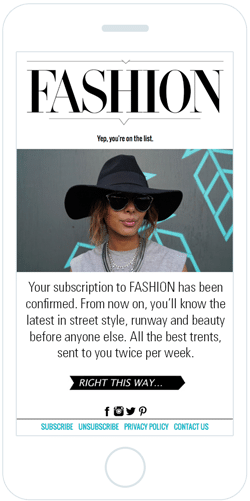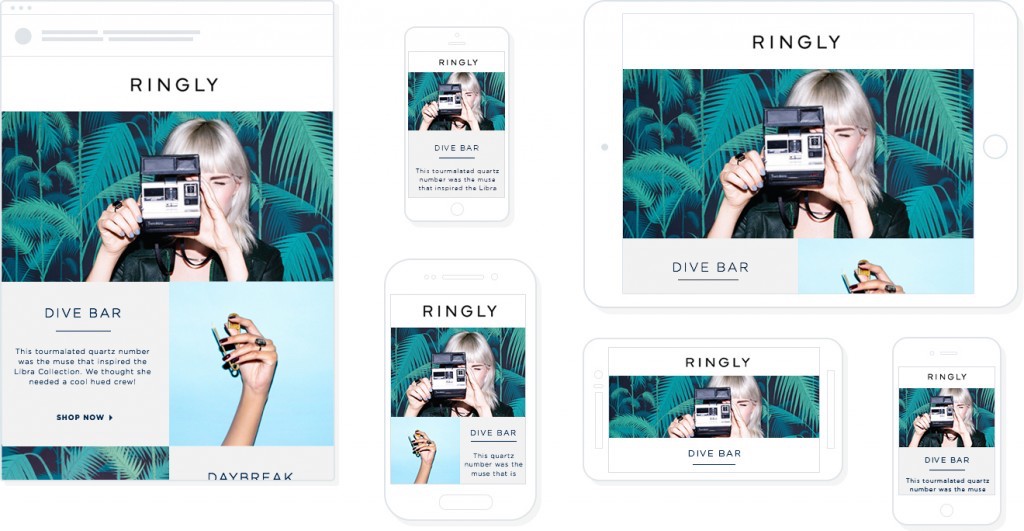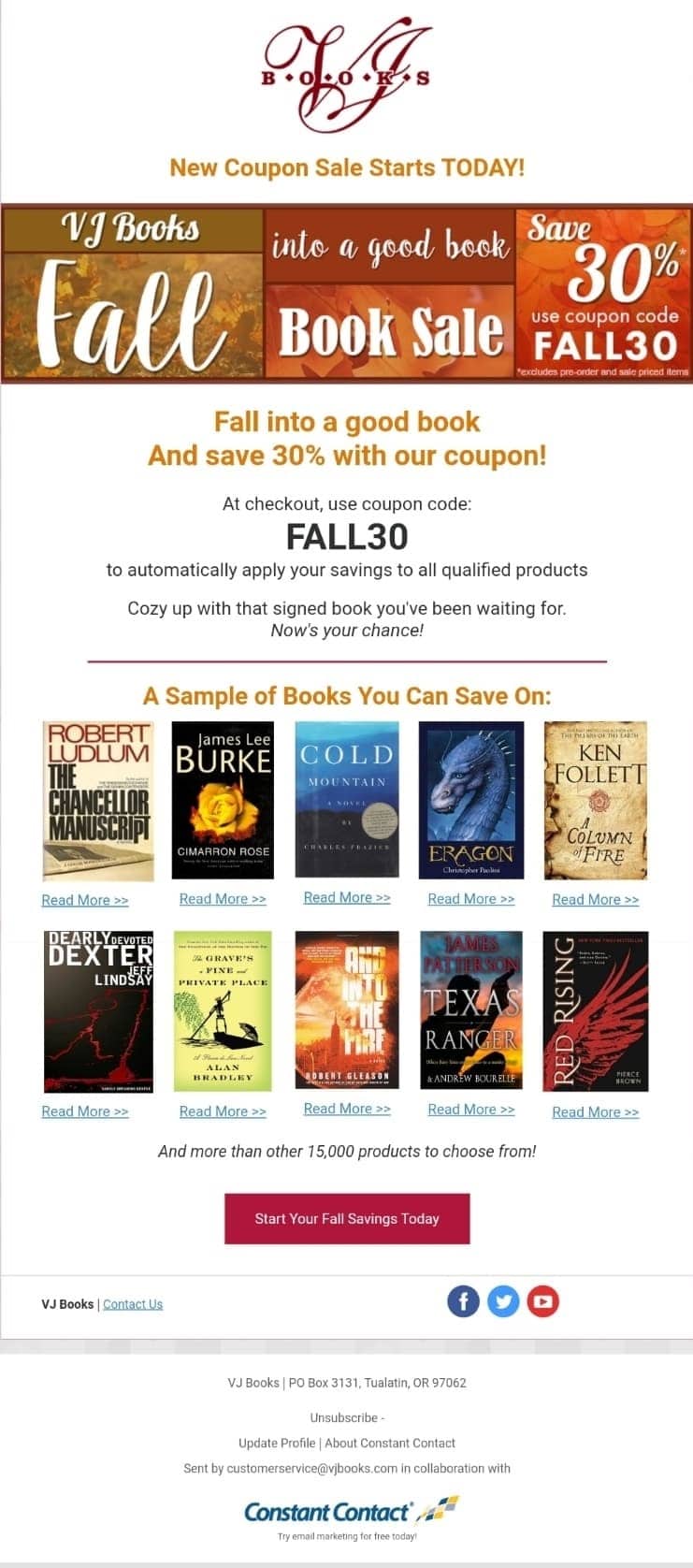Updated September 2019
Email marketing is widely used by publishers as a highly effective way to grow their audience and drive revenue for their businesses. Savvy publishers know that email marketing drives the highest ROI of any marketing tactic, and they’re using it to their advantage.
Read on to discover three email marketing best practices for publishers that any publishing business can easily implement and see results.
1. Cater to subscribers interests with segmentation.
Like many businesses, publishers cater to a lot of different subscribers and customers, each with their own preferences. For email marketing to be effective, publishers must cater to these specific interests. In other words, publishers can’t create one email and send it to everyone on their list. One-size-fits-all emails no longer deliver in an age where informed consumers want highly targeted content.
Research shows that 58% of revenue generated from emails comes from segmented lists. And marketers have found a 760% increase in email revenue from segmented campaigns.
Many businesses segment by demographics, past purchases, or buying behavior, but publishers tend to benefit most from interest-based segments. By allowing customers to select which content they want to receive based on their interests, response rates will likely increase. We’ve written about how BuzzFeed has excelled using this approach.
To make segmentation and user preferences a snap, you can set up a preference center that allows subscribers to pick the kind of content that arrives in their inbox. Here’s an example from Penguin Random House, asking subscribers to do just that:

With a preference center like this, subscribers do the segmenting by indicating their preferences. From this information, it’s possible to tailor email messaging to specific groups and create content specific to each category. It ensures that subscribers receive relevant emails that they care about.
2. Improve efficiency with email automation.
With email automation, marketers can easily create workflows to send personalized, timely, relevant emails to customers at the right time, which explains why 49% of companies are using it.
Here are a few types of emails that publishers can use:
Email courses
Apartment Therapy uses email automation to send baking lessons right to their subscribers’ inboxes. Subscribers receive daily lessons that guide them from novice to kitchen experts. And this type of opted-in, automated email pays, as open and click-through rates are around 55%.
Welcome emails
Research shows that the first 48 hours after sign up is when subscribers are the most engaged, and yet 41% of brands miss this window of time. Publishers can take advantage of this opportunity with an awesome welcome email.
Publishers set up a triggered email, so that, each time a new subscriber is added to a list, a welcome email is automatically sent.
- A relevant subject line that signifies a new relationship
- A friendly greeting as the opening line of the email message
- A mention of email frequency
- A CTA that leads subscribers to your website
BuzzFeed sends a welcome email to each their newsletter lists to set the tone of what subscribers will receive and when they’ll get it.

Personalized content
Publishers take the time to personalize emails to build stronger relationships with their subscribers. It’s a smart email marketing best practice because transaction rates for personalized emails are six times higher than those without. And emails with personalized subject lines are 26% more likely to be opened.
Many people assume personalization simply means adding a subscriber’s name to the subject line, but there are lots of ways to personalize an email, including:
- Business name
- Specific locations, phone numbers, or addresses
- Specific subscriber interest like a favorite author or a recent purchase
- Use images to match a subscriber’s location
While personalization may take a bit of additional time, it’s an important aspect to add to each email whenever possible.
Publishers using an email service provider, like Campaign Monitor, should be able to access a whole host of features to make personalization simple.
3. Focus on mobile.
With nearly half of all emails being opened up on mobile devices worldwide, mobile-friendly and responsive email templates are an absolute must.
Here’s an example from Fashion Magazine:

Why going mobile is a must for email marketers
With the world going mobile with their email viewing, email marketers must be designing with mobile in mind. If they don’t, the chances of their email message rendering correctly on a mobile device decline drastically, all while the chances of their message being deleted increase.
In fact, emails that display incorrectly on mobile devices can and will be deleted by receivers in under three seconds. Even worse, many users won’t just delete the message, but 15% of them will also go as far as to unsubscribe from your list. Why? Because they assume that your design team can’t put together a properly functioning email message.
So how can you ensure your email messages are rendering correctly and being seen by your audience? By using these tips:
- Check for oversized images or images that seem out place
- Cut down on the walls of text and use images and white space to create breaks
- Utilize a single column layout (unless you’re using a responsive template, but that’s another topic)
- Include ALT text that describes images, in case they don’t load
Knowing the difference between mobile-friendly and responsive email templates is also vital for your marketing team. While both are great options to ensure your message is seen on a mobile device, your users may prefer one method or the other. So what exactly is the difference?
- Mobile-friendly: These designs utilize a single column layout to ensure that all messages appear and function the same across all devices.
- Responsive: These designs can utilize a multi-column layout; however, they use media queries to ensure that the message alters its appearance to fit any size screen.
Source: Campaign Monitor
Campaign Monitor provides email templates that are mobile responsive, which means they look great on every device. Plus, publishers can send a test email prior to sending the email to their list to see how their email looks in 30+ email clients and devices.
Stellar examples of the best email marketing for publishers
Publishers have a very unique audience that they must cater to when it comes to their email marketing efforts. While some publishers are busy pushing sales of books and magazines, others focus heavily on catering to a reader’s need for information, such as news outlets.
That’s why we’ve decided to look at two very different email examples that we consider to be among the best email marketing for publishers—and we’ll tell you why.
VJ Books
VJ Books is a brand that sells books to their readers. So, while they may have plenty of product available to appeal to their readers, they still must take the time to design messages that catch their reader’s attention and get them to take action.
Source: Milled
This is an excellent example of email automation in action. Not only does it fit the fall sales theme that many brands are going to be utilizing now through the winter months, but it also makes use of several email marketing best practices.
In this example, we see that the marketing team started by grabbing the reader’s attention with a compelling and actionable subject line:
Subject line: NEW Fall Book Sale starts TODAY: Save 30% with coupon inside!
From there, they designed their message to keep the reader scrolling. Again, they inform the reader of the special deal but then use images of some of the most popular books to keep the readers scrolling. Instead of adding in descriptions of the books, the user must click on the CTA, “read more.” This creates user engagement and moves the subscriber from the message to the brand’s website.
If none of the books listed seem to capture the reader’s attention, then they make sure to say that there are over “over 15,000 products to choose from,” which is followed up with a “Start Your Fall Savings Today” CTA button.
Vox
Vox is an entirely different publisher whose focus is on bringing the world’s news to their subscribers.
What makes that tricky is the fact that these subscribers aren’t looking to buy a product. Instead, they’re looking for a reliable source of information, which requires a brand to not only build trust amongst their subscribers, but authority as well.
So how does Vox do that? Through content curation.
Source: Milled
Curating content is taking content from other sources and sharing it with your readers to help establish your authority on a subject, while also building trust with your readers. In this email example, it’s clear that Vox isn’t afraid to turn to the big boys in news to cater to their reader’s need for information.
Does that mean that Vox simply shares other’s brand’s content? No. Once a reader starts moving through the email, there are plenty of CTAs that draw the reader to the brand’s website, where they share their own content on similar subjects.
What’s great about this message is that Vox can easily curate the content to their readers’ needs, depending on how their readers have set up their email preference centers.
Wrap up
By adopting any or all of the email marketing best practices shared in this post, publishers can help attract new subscribers, grow their audience, provide relevant, engaging content, and get their messages seen, no matter where their subscribers view it.
Need help building on your email marketing best practices? Then check out these 8 practices to help improve your campaigns today.








